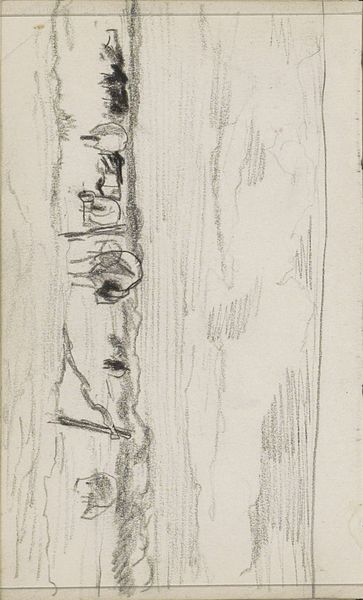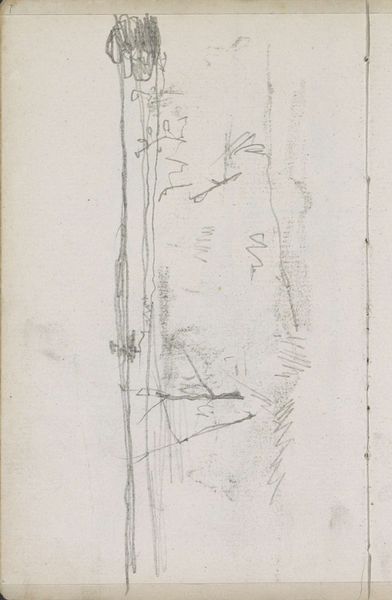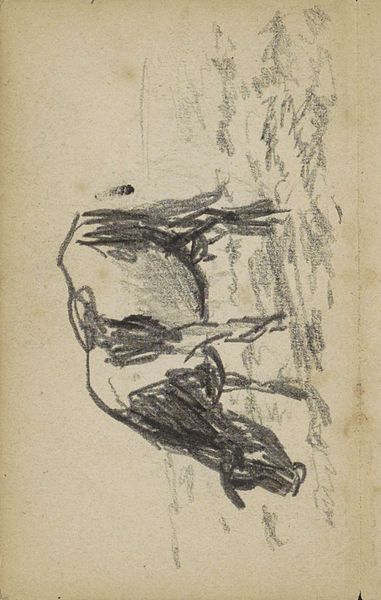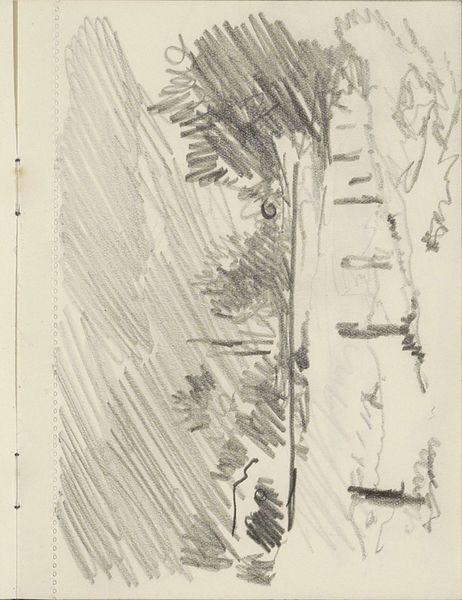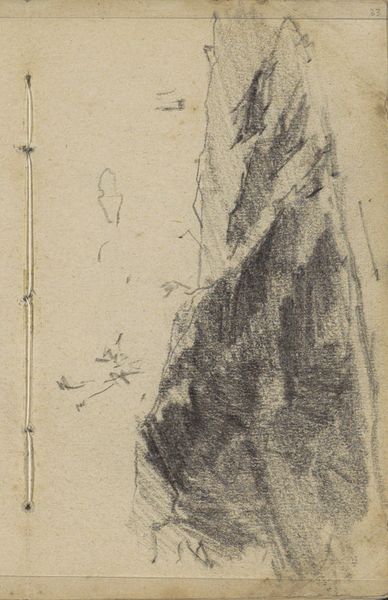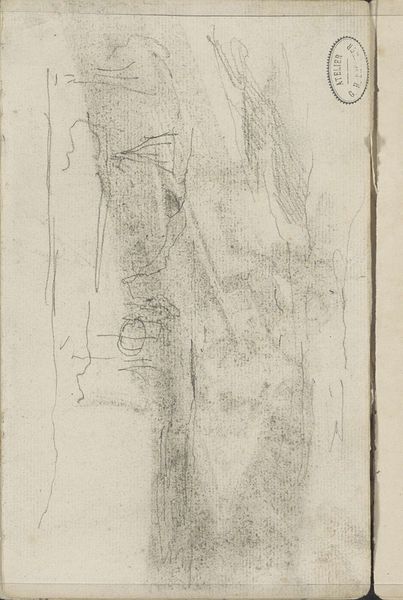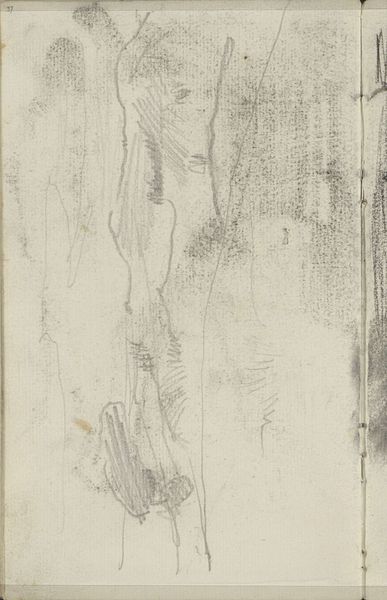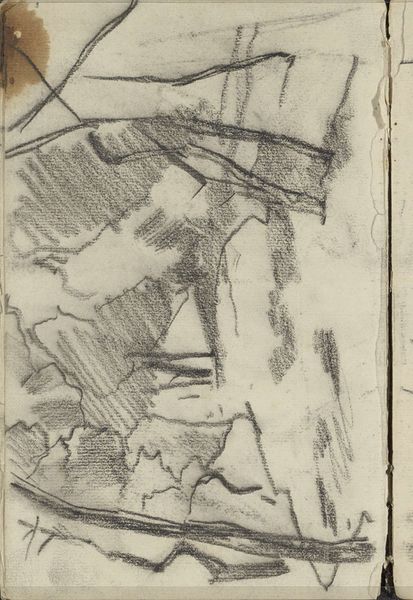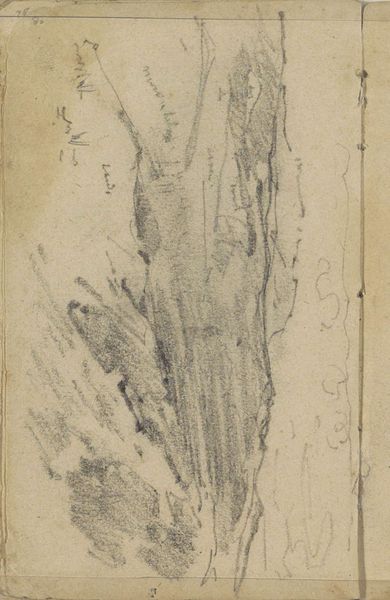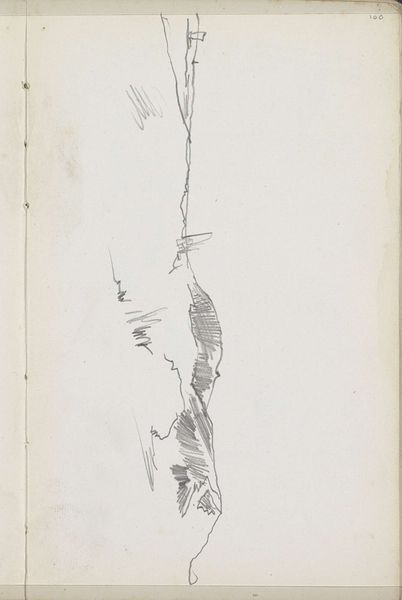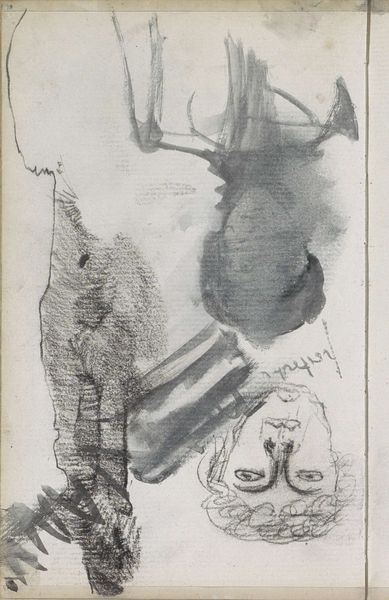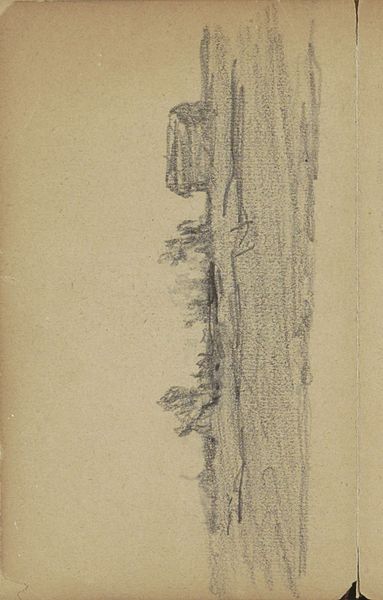
drawing, pencil
#
drawing
#
dutch-golden-age
#
impressionism
#
pencil sketch
#
landscape
#
pencil
Copyright: Rijks Museum: Open Domain
Curator: My first impression is one of starkness. It feels incredibly immediate. Editor: Let's delve into this landscape sketch further. Drawn in pencil by George Hendrik Breitner sometime between 1884 and 1886, it resides here at the Rijksmuseum. What symbols or echoes of the Dutch landscape tradition do you notice at play here? Curator: The darkness pressed up against the almost vacant space—there's a tangible emotional weight here. The darkness feels burdened, secretive. Is it the collective unconscious responding to urbanization, perhaps, with nature becoming this shrouded presence? Editor: Breitner was known for capturing Amsterdam’s gritty realities, his visual depictions focusing on everyday life. This pencil sketch strikes me as more of an intimate exploration – perhaps even a political statement through its unvarnished portrayal. How does this connect to Breitner’s known subjects of industrial life in Amsterdam at that time? Curator: I perceive it differently. To me, it transcends that immediate environment, reaching something older. The pencil marks, those striations of darks and lights - recall to me archaic symbols in northern Europe where trees embody wisdom. Is Breitner capturing some lost veneration through this raw landscape fragment? The density seems less documentary and more shamanic somehow. Editor: I see how you interpret the shading; it reminds one of the stark woodcuts from earlier times of the region! But I wonder how the immediacy that comes through suggests that he's interested in a modern sensibility toward sketching a common scene? I wonder where, exactly, would this be - in an immediate vicinity near Amsterdam? Or someplace further away where Breitner experienced as different kind of light? Curator: Could the ambiguity *be* the key? Not one single rootedness or another, but something more psychological in its nature, touching the primal nerves regarding how we view the land that sustains us. It transcends simple locality, morphing this common setting towards broader anxieties connected to human impact. It mirrors modern anxieties by shrouding the sacred qualities in deep ink, like shadows cast forward upon things we cherish most, wouldn't you say? Editor: It makes you consider the tensions from those eras that have now taken on new resonance, definitely! This invites thought beyond just historical or regional art. What do you see in this that remains relevant to today’s audiences looking for connections with Dutch landscapes now being so actively repurposed in the present day? Curator: In essence, there seems much to uncover beneath the lines of dark impressions. Perhaps an urge to understand, now stronger, the complex dynamic with a landscape altered profoundly in the past - in contrast to that of today.
Comments
No comments
Be the first to comment and join the conversation on the ultimate creative platform.
